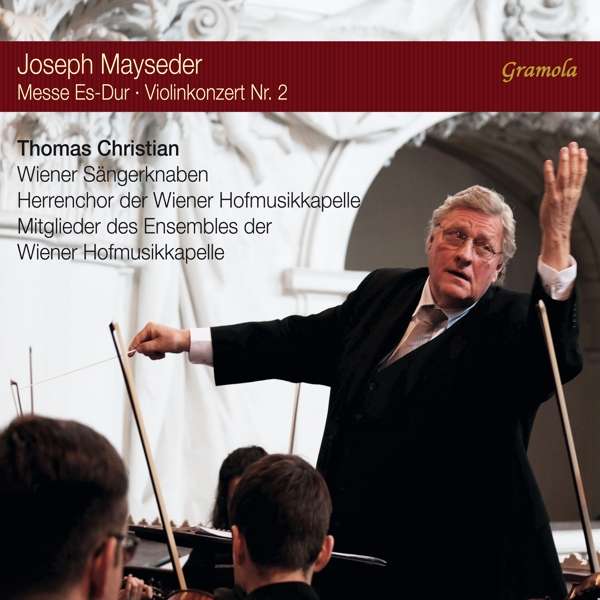 Joseph Mayseder: Messe Es-Dur op. 64 (Neujahrsmesse) + Violinkonzert Nr. 2, op. 26; Wiener Sängerknaben, Männerchor der Wiener Hofmusikkapelle, Wiener Hofmusikkapelle, Thomas Christian, Violine und Ltg.; 1 CD Gramola 99200; Aufnahme 05+06/2019; Veröffentlichung 21/02/2020 (International), 11/2019 (A) - 60'24 - Rezension von Remy Franck
Joseph Mayseder: Messe Es-Dur op. 64 (Neujahrsmesse) + Violinkonzert Nr. 2, op. 26; Wiener Sängerknaben, Männerchor der Wiener Hofmusikkapelle, Wiener Hofmusikkapelle, Thomas Christian, Violine und Ltg.; 1 CD Gramola 99200; Aufnahme 05+06/2019; Veröffentlichung 21/02/2020 (International), 11/2019 (A) - 60'24 - Rezension von Remy Franck
Joseph Mayseder (1789-1863) trat bereits ab elf Jahren in Konzerten auf, während er bei Emanuel Aloys Förster, der sowohl mit Haydn als auch mit Mozart befreundet war, Komposition studierte. Später wurde er Sologeiger des Orchesters der Wiener Hofoper und ab 1830 auch Konzertmeister der Wiener Hofmusikkapelle.
Das österreichische Label Gramola hat bereits mehrere CDs mit seinen Werken veröffentlicht.
Hauptwerk dieser neuen Veröffentlichung ist die Messe Es-Dur op. 64 für gemischten Chor und Orchester, also ohne die sonst üblichen Gesangssoli. Die Uraufführung der Messe fand 1848 in der Wiener Hofburgkapelle statt. Sie wurde von 1875 bis 1935 an 49 Neujahrstagen aufgeführt und hat daher den Beinamen Neujahrsmesse.
Nach einer Aufführung im Jahre 1940 war sie erst wieder 2018 in Wien zu hören
Die Komposition benutzt den traditionellen lateinischen Messtext und ist besonders in den ruhigen Passagen sehr stimmungsvoll. Aber auch der Rest der Messe ist anmutig und gefällig melodiös. Besonders schön sind Agnus Dei und Dona nobis pacem, die in der vorliegenden, durchwegs sehr guten Interpretation besonders innig musiziert werden.
Danach folgt das Violinkonzert Nr. 2 mit italienisch anmutenden Ecksätzen und einem sehr gefühlvollen Andante. Das Konzert wird von Thomas Christian schwungvoll dirigiert und auch als Solist akkurat betreut.
Joseph Mayseder (1789-1863) began performing at the age of eleven, while he studied composition with Emanuel Aloys Förster, who was a friend of both Haydn and Mozart. Later he became solo violinist of the Vienna Court Opera Orchestra and from 1830 also concertmaster of the Hofmusikkapelle. The Austrian label Gramola has already released several CDs with his works.
The main work of this new release is the Mass in E flat major op. 64 for mixed choir and orchestra, i.e. without the usual vocal solos. The premiere of the mass took place in 1848 at the Hofburgkapelle in Vienna. It was performed on 49 New Year’s days from 1875 to 1935 and is therefore known as the New Year’s Mass.
After one single performance in 1940, it was not heard again in Vienna until 2018.
The composition uses the traditional Latin mass text and is very atmospheric, especially in the quiet passages. But also the rest of the mass is graceful and pleasingly melodic. Especially beautiful are the Agnus Dei and Dona nobis pacem, which are truly heartfelt in this overall very good performance.
This is followed by the Violin Concerto No. 2, with outer movements reminiscent of Italian music and a very sensitive Andante. The concert is conducted by Thomas Christian with verve and is also accurately supervised as soloist.



















